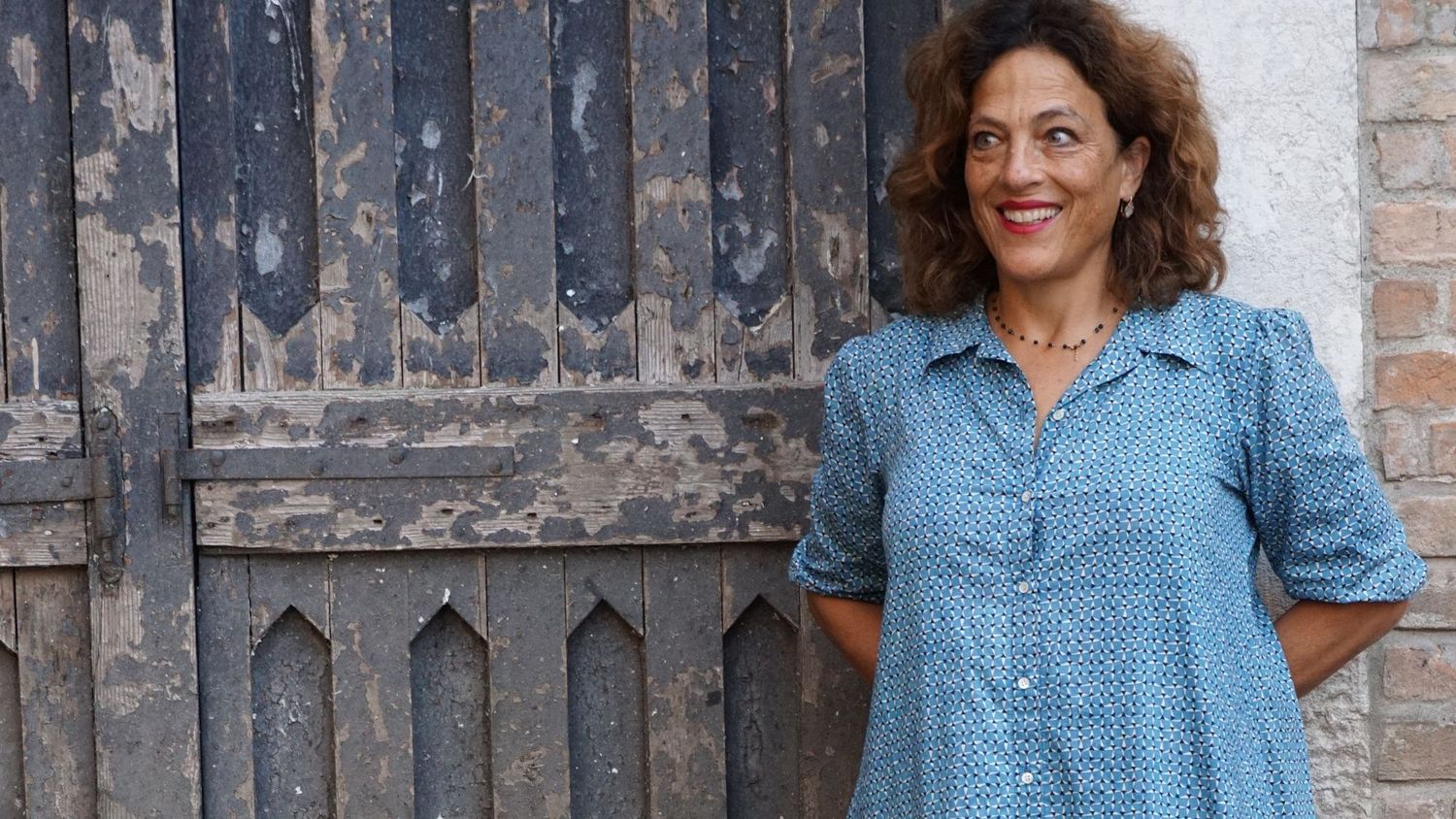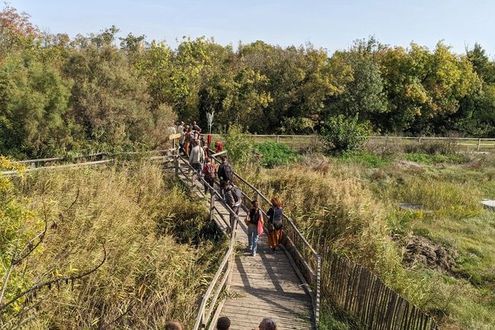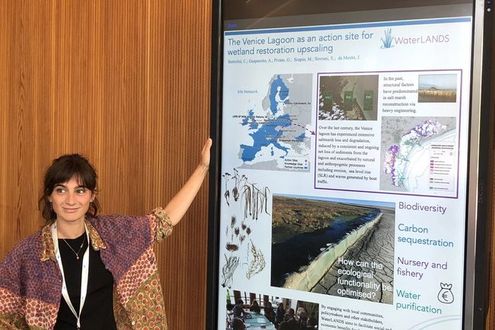Meet the WaterLANDS team! Jane da Mosto is a co-founder and executive director of the NGO We are here Venice, which is working to protect and restore Italy's largest coastal wetland, the Venice Lagoon. Check out Jane's interview for the first WaterLANDS external newsletter below.
Hi Jane, thanks for sitting down with me! Can you tell us where you are based?
Happy to! I am based in Venice, Italy.
What WaterLANDS institution are you a part of and what have you been working on as part of the project?
I am part of the NGO We are here Venice. We are here Venice manage the Venice Knowledge and Action Site, and so we engage with much of the work across the project, including by engaging with communities around Venice, carrying out on-the-ground restoration, and coordinating outreach activities.
What are the characteristics of the Venice Lagoon that make it so important to protect?
The Venice Lagoon is Italy’s largest coastal wetland and hosts key biodiversity as well as vital functions of economic significance ranging from carbon storage by salt marsh and sea grass meadows to the provision of shipping infrastructure. We are acutely aware that Venice has significant experience to share as regards long-standing interrelationships between human society and adaptive management of dynamic systems like the Lagoon and wetlands in general. The Lagoon is afflicted by critical, urgent challenges in the face of the climate crisis and other changes on a global scale as well as negative trends like wide scale erosion and net sediment loss.
What has been your highlight from the WaterLANDS project so far?
As a relatively small NGO it is exciting to have been included as a partner in this dynamic consortium. We are learning fast and embrace this opportunity to work with excellent partners, broaden our networks and build capacity within our organisation.
What do you think is most important when working with local communities on restoration projects?
Local communities have key knowledge about the lagoon in general as well as factors affecting the salt marsh such as boat drivers and fishermen who spend long hours in the lagoon; their information complements scientific research and environmental monitoring networks.
Acknowledging local communities in the design of restoration initiatives and effective communication about projects also improves the probability of success via constructive engagement and feedback to support adaptive management of the restoration interventions. Last but not least, the Venice site is notable for the wide gap between citizens/residents of the lagoon and the main public institutions making decisions affecting the future of the entire system; we are trying to address this diffidence on both sides.
Thank you, Jane! We can't wait to see what is next from We are here Venice. If you are interested in learning more about the restoration works at the Venice lagoon, you can contact We are here Venice at info@weareherevenice.org or waterlands@weareherevenice.org. If you would like to keep up to date with WahV, you can follow them on Instagram & Twitter @weareherevenice, or search We are here Venice on LinkedIn and Facebook.
Photo by Andrea Merola


